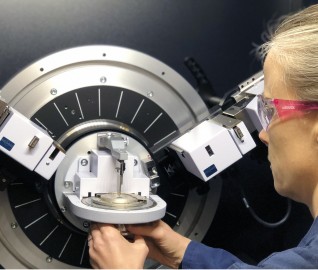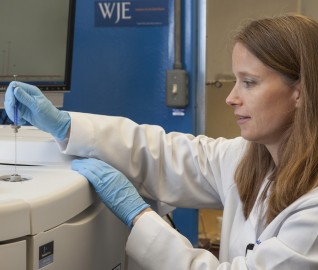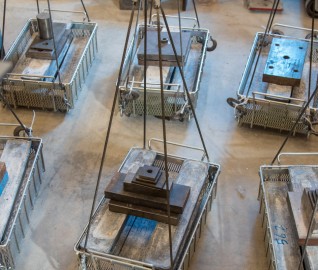This test method covers the determination of length change of mortar bars immersed in a sulfate solution. Mortar bars made using mortar described in Test Method C109/C109M are cured until they attain a compressive strength of 20.0 ? 1.0 MPa [3000 ? 150 psi], as measured using cubes made of the same mortar, before the bars are immersed. The values stated in either SI units or inch-pound units are to be regarded separately as standard. Within the text, the inch-pound units are shown in brackets. The values stated in each system may not be exact equivalents; therefore, each system shall be used independently of the other. Combining values from the two systems may result in non-conformance with the standard.
WJE laboratories are accredited by AASHTO (R18) and ANAB (ISO/IEC 17025) to perform testing standard ASTM C1012 for Length Change of Hydraulic-Cement Mortars Exposed to a Sulfate Solution.
Contact us to learn more.
Keywords
ASTM C1012 - Chemical Resistance - Compressive Strength - Deformation - Mortar Bar Test - Mortars - Sulfate Attack - Sulfate Resistance
ICS CODE
91.100.10 (Cement. Gypsum. Lime. Mortar)
UNSPSC CODE
30111504 (Mortars)
CITATION FORMAT
ASTM C1012 / C1012M-18b, Standard Test Method for Length Change of Hydraulic-Cement Mortars Exposed to a Sulfate Solution, ASTM International, West Conshohocken, PA, 2018,
www.astm.org
 John E. Pearson, Principal and Laboratory ManagerWJE Northbrook MORE >People | John E. Pearson, Principal and Laboratory Manager
John E. Pearson, Principal and Laboratory ManagerWJE Northbrook MORE >People | John E. Pearson, Principal and Laboratory Manager WJE's Janney Technical Center (JTC) provides advanced testing and forensic capabilities to... MORE >Labs | Janney Technical Center
WJE's Janney Technical Center (JTC) provides advanced testing and forensic capabilities to... MORE >Labs | Janney Technical Center Our materials scientists provide comprehensive consulting services for the evaluation and... MORE >Services | Materials Evaluation and Testing
Our materials scientists provide comprehensive consulting services for the evaluation and... MORE >Services | Materials Evaluation and Testing WJE was founded on a spirit of innovation—that everything can be improved and that... MORE >Services | Product Development, Evaluation, and Testing
WJE was founded on a spirit of innovation—that everything can be improved and that... MORE >Services | Product Development, Evaluation, and Testing


































